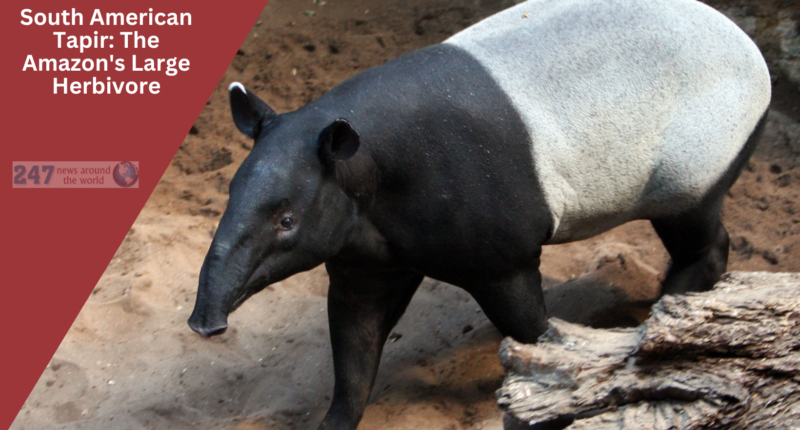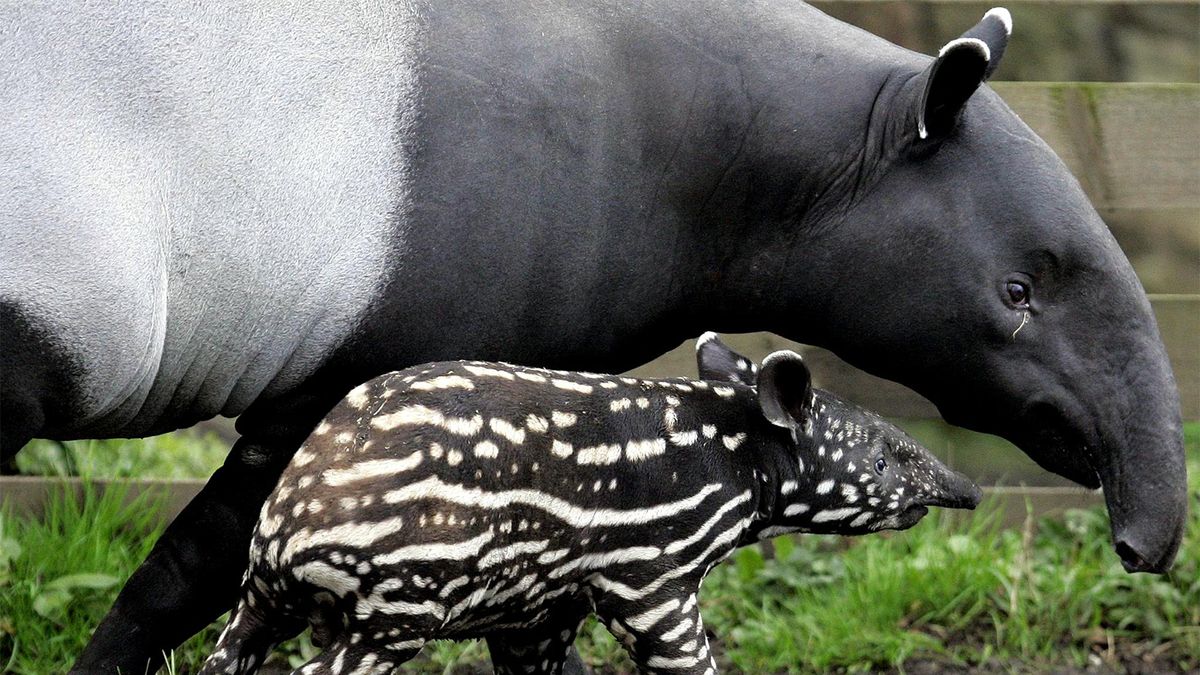A look at “South American Tapir: The Amazon’s Large Herbivore” The South American Tapir, scientifically known as Tapirus terrestris, is a remarkable mammal found in the heart of the Amazon rainforest. With its distinctive appearance and fascinating ecological role, the South American Tapir plays a crucial part in maintaining the delicate balance of this diverse ecosystem. In this article, we will delve into the world of the South American Tapir, exploring its physical characteristics, habitat, behavior, and conservation status.
The Appearance of the South American Tapir
The South American Tapir is an impressive creature, characterized by its large and robust body. It can reach a length of up to 8 feet and stand at a height of approximately 3.5 feet at the shoulder. These magnificent animals can weigh between 330 and 700 kilograms (730 to 1,540 pounds), making them the largest herbivores in the Amazon rainforest.
Their most distinguishing feature is their flexible, prehensile proboscis-like snout, known as a trunk. The trunk assists the tapir in grasping leaves, fruits, and aquatic vegetation. The tapir’s body is covered in short, dense fur, which varies in color from light brown to grayish-black, providing them with excellent camouflage within their environment.
Habitat and Distribution
South American Tapirs inhabit the rainforests, swamps, and grasslands of South America. They are primarily found in the Amazon basin, as well as the Pantanal wetlands and the Atlantic Forest. These regions provide the tapirs with the necessary resources for their survival, including water sources, food, and shelter.
Diet and Feeding Habits
As herbivores, South American Tapirs have a diverse and adaptable diet. They consume a wide range of plant matter, including leaves, tender shoots, fruits, and aquatic vegetation. The tapir’s elongated snout allows it to reach and pluck leaves and fruits from branches, making it a proficient forager.
See Also | Green Anaconda Vs Giant Anaconda: Which One is bigger And What’s the Difference?
Social Behavior and Communication
South American Tapirs are solitary animals, usually only coming together during the mating season. They have well-defined home ranges that they mark with scent glands located on their feet. These scent markings serve as a way to communicate with other tapirs and establish territory boundaries.
Tapirs are known for their excellent swimming abilities. They often use water bodies as a means of escape from predators and to find food. Despite their solitary nature, tapirs may occasionally gather around mineral-rich mud pits, which not only provide vital minerals but also offer opportunities for social interactions with other tapirs.
Reproduction and Life Cycle
Tapirs reach $exual maturity at around three to four years of age. During the mating season, a male tapir will travel significant distances to find a female. After mating, the gestation period lasts approximately 13 months, resulting in the birth of a single calf.
The newborn tapir has a distinctive coat pattern, covered in white stripes and spots. This unique coloration acts as camouflage, helping the calf blend in with the surrounding vegetation. The calf remains hidden in dense vegetation for several weeks, where the mother provides nourishment and protection.
Within a few hours of birth, the calf is able to walk and follow its mother. It will continue to nurse for about six months, gradually transitioning to a diet of solid vegetation. The bond between the mother and calf is strong, and they stay together for up to two years until the calf becomes independent.
Predators and Threats
While the South American Tapir is a large and powerful animal, it still faces several natural predators. Jaguars and large felines are among the main predators of tapirs in the Amazon rainforest. Additionally, crocodilians, such as caimans and anacondas, pose a threat, especially to young tapirs near water bodies.
However, the greatest threats to the South American Tapir come from human activities. Habitat loss due to deforestation, illegal hunting, and the fragmentation of their habitats have significantly impacted tapir populations. Encroachment on their natural habitats disrupts their movement and leads to increased human-wildlife conflict.
Conservation Efforts
Recognizing the importance of preserving the South American Tapir and its habitat, conservation organizations and governments have initiated various measures to protect these magnificent creatures. Efforts include the establishment of protected areas, implementing strict anti-poaching measures, and promoting sustainable land use practices.
Educational programs and community engagement are also vital components of tapir conservation. By raising awareness and involving local communities, conservationists aim to foster a sense of stewardship and encourage responsible practices that benefit both tapirs and the surrounding ecosystems.
The Importance of South American Tapirs in the Amazon Rainforest
The South American Tapir plays a crucial ecological role in the Amazon rainforest. As large herbivores, they aid in seed dispersal, helping to maintain forest diversity and regeneration. Tapirs consume a variety of fruits and plants, and their digestive systems are adept at processing seeds, allowing them to disperse seeds across different areas of the forest.
By contributing to the growth and survival of plant species, tapirs indirectly support the rich biodiversity of the Amazon rainforest. Their presence also influences the composition and structure of plant communities, creating a balance that benefits numerous other species, including insects, birds, and mammals.
Frequently Asked Questions (FAQs)
1. Are South American Tapirs endangered?
Yes, South American Tapirs are considered vulnerable according to the International Union for Conservation of Nature (IUCN). Their populations have been declining due to habitat loss and hunting.
2. How many South American Tapirs are left in the wild?
Exact population numbers are challenging to determine, but it is estimated that there are between 13,000 to 20,000 South American Tapirs remaining in the wild.
3. What is the lifespan of a South American Tapir?
In the wild, South American Tapirs typically live for around 25 to 30 years. However, they have been known to live longer in captivity, reaching up to 35 years of age.
4. Do South American Tapirs have any natural predators?
Yes, tapirs face predation from large cats, such as jaguars and pumas, as well as crocodilians like caimans and anacondas.
5. How can I help conserve South American Tapirs?
You can contribute to tapir conservation efforts by supporting organizations working to protect their habitats, raising awareness about their importance, and practicing responsible tourism and consumption choices that do not harm their populations or their environment.
Conclusion
The South American Tapir holds a significant place in the complex tapestry of the Amazon rainforest. As the largest herbivore in this diverse ecosystem, it plays a crucial role in seed dispersal and forest regeneration. However, these remarkable creatures face numerous challenges, including habitat loss and poaching.
Conservation efforts are vital to ensure the survival of the South American Tapir and the preservation of its unique habitat. By supporting organizations dedicated to tapir conservation, raising awareness, and promoting sustainable practices, we can contribute to the long-term well-being of these magnificent creatures and the Amazon rainforest as a whole.
As we marvel at the beauty and importance of the South American Tapir, let us strive to protect and conserve this incredible species, for the benefit of future generations and the delicate balance of our planet’s biodiversity.
See Also | 15 Largest Creatures Found In The Amazon








